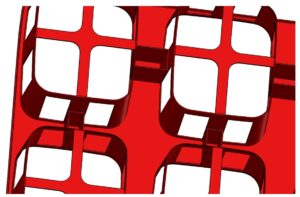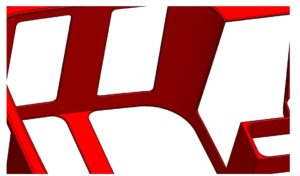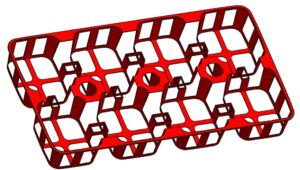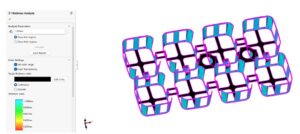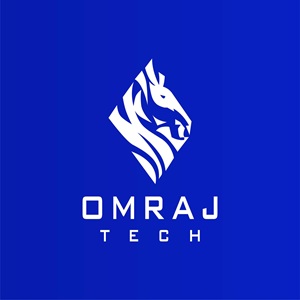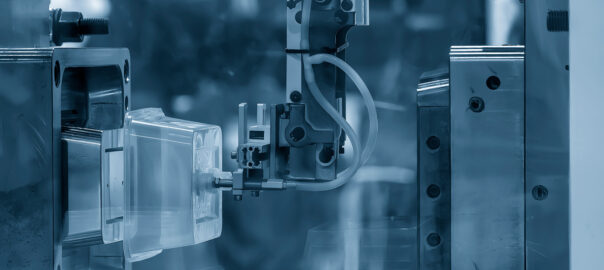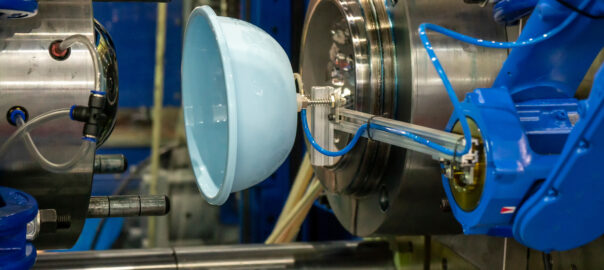Injection molding suppliers play a critical role in ensuring smooth production, timely deliveries, and consistent part quality. However, when a supplier begins to underperform due to financial difficulties, technical shortcomings, or operational inefficiencies, it can severely impact your business. Exiting a troubled supplier requires a well-thought-out strategy to mitigate risk, avoid production delays, and transition seamlessly to a new supplier.
In this guide, we’ll explore how to identify red flags, mitigate risks, and successfully transition from a troubled injection molding supplier. We’ll also discuss tools and resources you can use to evaluate your current supplier’s financial health, review contracts, and ensure a smooth exit.
Key Red Flags to Watch for in Injection Molding Suppliers
Recognizing early warning signs can help you avoid a full-blown supply chain crisis. Here are the key signs that indicate it’s time to consider exiting your injection molding supplier:
1. Financial Instability
If your supplier is experiencing financial distress, their ability to maintain production, quality, and delivery will suffer. Signs of financial instability include:
-
Missed payments to subcontractors or raw material suppliers.
-
Sudden price increases or requests for upfront payments.
-
Inability to invest in maintaining or upgrading equipment.
-
Layoffs or workforce reductions that may affect production capacity.
Tools to Assess Supplier Financial Health:
-
Dun & Bradstreet (D&B): Provides detailed reports on a supplier’s financial stability, creditworthiness, and payment history. You can access financial assessments to see if your supplier is at risk of bankruptcy or financial delinquency.
D&B Supplier Financial Reports
-
CreditRiskMonitor: A service that tracks publicly traded companies and provides real-time data on supplier financial risk. This tool is helpful if your supplier is a publicly listed company.
CreditRiskMonitor
2. Persistent Quality Issues
Frequent quality problems—such as non-conforming parts, high scrap rates, or poor workmanship—are signs that the supplier may not be investing in adequate quality control processes. This can lead to increased production costs and potential delays.
How to Mitigate Quality Risks:
-
Set up clear quality metrics such as defect rates, scrap levels, and rework hours. Use tools like Statistical Process Control (SPC) to ensure the supplier’s production stays within acceptable limits.
-
Inspect parts regularly to verify quality compliance. Ensure that the supplier adheres to the agreed-upon quality control procedures.
3. Lack of Engineering Support
If your supplier is no longer providing proactive engineering support, such as Design for Manufacturability (DFM) reviews or technical advice, they may lack the resources or expertise to meet your needs.
Risk Mitigation Tip:
-
Regularly review technical support: Evaluate whether your supplier is still providing the necessary engineering guidance for material selection, tooling improvements, and process optimization. A lack of support could indicate internal problems.
4. Operational Inefficiencies
If your supplier struggles to meet lead times, consistently delivers late, or fails to adhere to schedules, it may be due to poor internal management or equipment breakdowns.
Risk Mitigation Tip:
-
Track delivery metrics: Set up performance indicators to monitor lead times, on-time delivery, and production flow. A drop in performance may signal deeper operational inefficiencies that could jeopardize your supply chain.
5. No Continuous Improvement or Cost Savings
If your supplier hasn’t offered cost reductions or efficiency improvements in years, it may be a sign that they are stagnating. Continuous improvement is essential to staying competitive in any industry.
Risk Mitigation Tip:
-
Evaluate continuous improvement programs: If your supplier does not have an ongoing program to optimize processes, reduce costs, or introduce automation, it’s a sign that they may not be looking out for your long-term best interests.
Key Tools to Mitigate Risk Before Exiting a Supplier
Before making the decision to exit a supplier, it’s important to take steps to mitigate the risks of financial, operational, or legal issues. Below are tools and resources that can help you evaluate your current situation and plan for an orderly exit.
1. Supplier Financial Assessment Tools
Assessing the financial stability of your supplier is essential to avoid being caught off-guard by financial difficulties such as bankruptcy or sudden price hikes.
-
Dun & Bradstreet (D&B): Offers detailed supplier risk reports, including payment trends, financial strength, and bankruptcy predictions. This allows you to see whether your supplier is likely to experience financial difficulties. D&B Supplier Risk Management
-
CreditRiskMonitor: Provides real-time data on public companies’ financial health, helping you track a supplier’s risk profile. CreditRiskMonitor
2. Legal Contract Reviews
Reviewing your contract terms is critical when considering exiting a supplier. Key items to review include ownership of tooling, payment terms, and exit clauses.
-
Ownership of Tooling: Ensure you understand who legally owns the tooling and whether it can be moved to another supplier. Check for clauses about tooling amortization, especially if the supplier helped finance it.
-
Amortization of Tooling: If your supplier holds ownership due to an amortization agreement (where tooling costs are spread across production), ensure you know what remains of the balance. You may need to settle the amortization costs before taking the tool to a new supplier.
-
Exit Clauses: Review your contract for exit terms, including penalties for early termination, tooling ownership transfer agreements, and payment obligations for undelivered products.
Legal Resources:
-
LexisNexis: A comprehensive legal database that can help you review supplier contracts and understand your rights.
LexisNexis
-
Legal Counsel: If your contracts are complex or involve significant financial or operational commitments, consult legal counsel to ensure a smooth exit.
3. Supplier Performance Audits
A supplier performance audit can help you determine whether a supplier is meeting contractual obligations and industry standards.
-
Audit Scope: Evaluate the supplier’s quality control, production processes, financial health, and compliance with industry certifications (such as ISO 9001 or ISO 13485). An audit will give you a clear picture of whether the supplier is capable of continuing to meet your needs.
-
Supplier Audit Checklist: Use tools like BSI Group’s audit checklist to systematically assess your supplier’s performance. BSI Supplier Audits
4. Reviewing Ownership of Tools and Molds
One of the most important factors in transitioning from a troubled supplier is ensuring that you can legally take your molds and tooling to another supplier. Your contract should clearly outline who owns the tooling, whether you’ve paid for it in full, and the process for transferring it if necessary.
-
Tool Ownership: If the supplier owns the tooling due to an amortization agreement, you’ll need to settle any remaining balance before taking it to a new supplier.
-
Condition of Tooling: Assess the health of the tooling to ensure it’s in good condition before moving it. Consider the cost of repairs or refurbishment if needed.
The Process of Transitioning from a Troubled Supplier
Once you’ve identified the red flags and taken the necessary precautions, you’re ready to transition to a new supplier. Here’s a step-by-step guide to ensure a smooth transition:
Step 1: Conduct Benchmarking and Market Study
Before starting the supplier search, it’s critical to conduct a benchmarking and market study. This step helps you assess whether your current supplier is still competitive in terms of pricing, lead times, and quality standards. It also provides insights into potential cost savings and better capabilities offered by alternative suppliers.
Key Actions:
-
Market Pricing: Compare your current supplier’s costs to industry standards for similar products and volumes. Understanding what the market offers will help you negotiate better pricing and terms with new suppliers.
-
Supplier Capabilities: Look for suppliers with advanced technologies, such as automation and lean practices, which can reduce production costs and improve quality.
-
Lead Times and Flexibility: Evaluate the average lead times in the market to ensure that your new supplier can meet your production timelines.
Tools for Benchmarking:
-
ThomasNet: An extensive industrial supplier directory that allows you to search for injection molding manufacturers by region, certification, and capabilities. It’s a great starting point for benchmarking supplier capabilities and costs.
-
MFG.com: A global manufacturing marketplace that allows you to receive quotes from multiple suppliers. Use this platform to benchmark pricing and lead times.
Step 2: Search for New Injection Molding Suppliers
Once you’ve benchmarked the market, you can begin searching for new suppliers. Start by creating a list of potential partners that meet your requirements in terms of quality, capacity, certifications, and industry expertise.
Criteria to Consider:
-
Experience and Specialization: Look for suppliers with expertise in your specific industry, whether that’s automotive, medical devices, or consumer goods.
-
Certifications: Ensure the supplier holds necessary certifications such as ISO 9001 (quality management) or ISO 13485 (medical devices) to guarantee compliance with industry standards.
-
Production Capacity: Verify that the supplier has sufficient capacity to handle your production volumes and any potential scalability in the future.
Tools for Supplier Search:
-
ThomasNet: Use this directory to filter suppliers based on specific capabilities, such as clean room molding, high-volume production, or specialized materials.
ThomasNet Supplier Search
-
Plastic Buyers Guide: A specialized directory focused on the plastics industry, listing suppliers for injection molding, materials, and equipment.
Plastic Buyers Guide
Step 3: Narrow Down to the Top 3 Suppliers
After gathering a list of potential suppliers, it’s time to narrow it down to the top three based on their capabilities, certifications, and track record. You should conduct thorough research, schedule site visits, and request case studies or customer references.
What to Look For:
-
Tooling Expertise: Ensure the supplier has in-house tooling capabilities or strong partnerships with toolmakers. This is crucial for a smooth transition if you need to transfer or develop new molds.
-
Automation and Lean Practices: Evaluate whether the supplier uses automation to streamline production and reduce costs. Lean manufacturing practices are a good indicator of efficiency and continuous improvement.
-
Track Record and References: Speak to other customers to assess the supplier’s reliability, delivery times, and ability to meet quality standards.
Site Visit Checklist:
-
Inspect the condition of the equipment and tooling facilities.
-
Review the supplier’s quality control processes, such as Statistical Process Control (SPC).
-
Ask about lead times, production flexibility, and the supplier’s capacity for design support.
Step 4: Inspect the Current Health of Your Tooling
Before making the decision to move your tooling to a new supplier, it’s important to assess the condition of your molds. If the tooling is nearing the end of its life cycle or is significantly worn, it may be more cost-effective to build a new mold rather than transferring it.
Tooling Inspection Checklist:
-
Tool Wear: Inspect the mold for wear and tear, especially in critical areas like cavities, cores, and slides. If the mold is worn, consider the cost of refurbishing versus building a new one.
-
Maintenance Records: Review the mold’s maintenance history to understand whether it has been properly maintained by the current supplier. A well-maintained tool is less likely to encounter issues during the transition.
-
Ownership and Amortization: Review the legal ownership of the tooling and ensure that any remaining amortization costs are settled if the supplier has financed the tooling.
Tool Inspection Resources:
Step 5: Build a Bank of Inventory to Buffer During Transition
To avoid production downtime during the transition from your old supplier to a new one, it’s important to build a safety stock. This will help ensure you have sufficient inventory to meet demand while the new supplier ramps up production.
Steps to Take:
-
Estimate Lead Time for Tool Transfer and Production Ramp-Up: Work with both your current and new suppliers to develop a timeline for the tooling transfer, production setup, and quality validation.
-
Build a Safety Stock: Build enough safety stock to cover the entire transition period, including any unexpected delays in tooling transfer or production ramp-up at the new supplier.
-
Prepare for Potential Delays: Factor in extra buffer time to ensure your production isn’t interrupted in case of any unexpected issues.
Step 6: Transition the Tooling (or Build a New Mold)
Once you’ve selected a new supplier and determined the condition of your tooling, you’ll need to decide whether to transfer your existing mold or build a new one. The decision will depend on the health of the current tool and the cost implications of either option.
Key Considerations:
-
Tool Transfer Logistics: If transferring the tool, ensure that the supplier has the capability to safely transport, install, and validate the tool at their facility. Coordinate with both the old and new supplier to manage this process smoothly.
-
Tool Validation: Whether you are transferring or building a new mold, the new supplier must validate the tool to ensure it meets part specifications. This includes performing a First Article Inspection (FAI) to verify part quality and dimensional accuracy.
-
New Mold Build: If building a new tool, work closely with the new supplier’s engineering team to ensure the design meets your quality, cost, and lead time requirements. Also, request benchmark pricing for mold building to ensure competitive rates.
Step 7: Monitor Performance of the New Supplier
After the tooling is in place and production has started at the new supplier, closely monitor their performance. Pay special attention to the first few production runs to ensure that the parts meet your quality standards, delivery times, and cost expectations.
Key Metrics to Track:
-
On-Time Delivery: Ensure that your new supplier is meeting delivery schedules to avoid disruptions in your production process.
-
Quality Control: Track quality metrics such as defect rates, rejections, and scrap levels. Make sure the new supplier is adhering to your quality requirements.
-
Ongoing Communication: Set up regular meetings with the supplier’s technical team to review performance and address any issues. Continuous improvement should be part of the ongoing supplier relationship.
Performance Monitoring Tools:
-
KPI Dashboards: Use tools like TrackVia to set up dashboards that monitor supplier performance metrics, including quality control, delivery times, and cost-saving initiatives. TrackVia
Conclusion
Exiting a troubled injection molding supplier is a complex process, but it’s necessary to safeguard your supply chain from disruptions, quality issues, and financial risks. By conducting thorough benchmarking, searching for qualified suppliers, and managing the transition with clear communication and planning, you can ensure a smooth shift to a more reliable partner.
At Om Raj Tech, we help businesses identify and transition to top-quality injection molding suppliers that meet their unique needs. Our network of trusted manufacturers offers world-class tooling, engineering support, and lean manufacturing capabilities to ensure long-term success.
Contact us to discuss how we can support your transition to a more reliable supplier and secure the future of your production
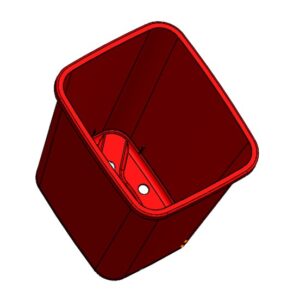
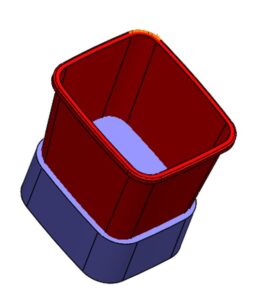
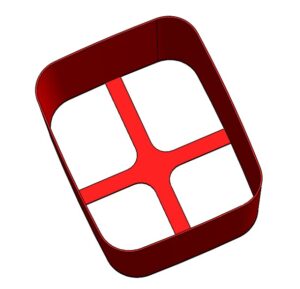
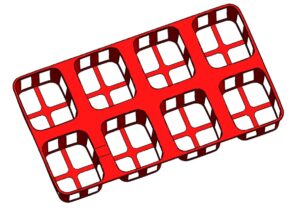 4. Add ribs using Rib tool with automatic draft.
4. Add ribs using Rib tool with automatic draft.